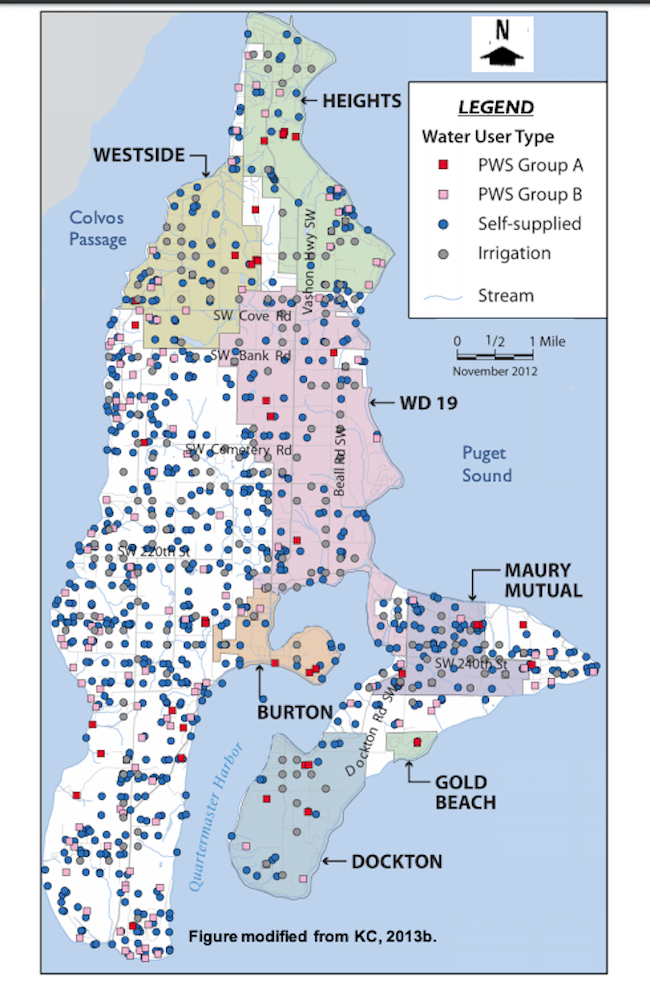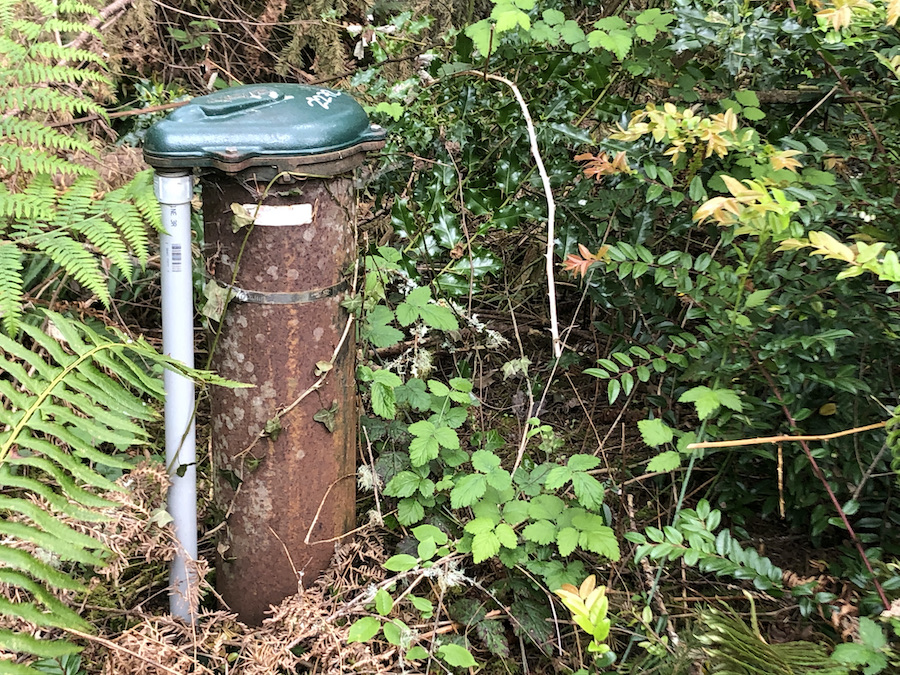written by: Mary Bruno
This is the seventh in a monthly series of guest blog posts that Mary will be sharing about island water quality topics thru the Groundwater Protection Committee.
Let’s say you moved to Vashon-Maury Island from Seattle or Boise or some less rural spot with municipal sewer and water service. Which means that you never had to think about where your water was coming from or where your waste was going. Now, you have a well and a septic tank. You are your own utility, and a steward of our collective and lone water supply. Welcome to island life.
If managing critical infrastructure is, you know, not really your thing—hell, even if it is!—the Vashon-Maury Island Groundwater Protection Committee invites you to check out its new SafeWellsVashon program.
SafeWells is an effort to support and partner with private well owners like you. The goals of the program are simple and straightforward: more data, smarter stewardship. Here’s how the SafeWellsVashon program works—and why it’s important.
The Groundwater Protection Committee will provide training and technical assistance on the proper care of private wells, along with workshops, monitoring equipment and water testing. In exchange, volunteer well owners will collect and share data on water quality, levels and usage. For more information and sign-up details contact the SafeWellsVashon team at safewellsvashon@kingcounty.gov.

The SafeWells program is important because it addresses two pressing needs. The first is support for private well owners. A quick glance at all the blue and grey circles and pink squares on the map above shows that there are a lot of them on Vashon-Maury Island (VMI). Based on response to the Groundwater Committee’s recent Zoom session with local well expert Bob Seibold of Island Pump, Inc., they need help. During the 45-minute Q&A Bob Seibold fielded more than 25 questions from more than 60 private well owners: Exactly how do I test my well water? What does it mean if my water turns orange? How can I safely draw water from a large storage tank if the power and the pump goes out for days? Rather than bushwhacking the web for answers or solutions, SafeWellsVashon will help you take care of your own water system and, by extension, safeguard our precious community supply. (Go here for a detailed summary of the Bob Seibold Q&A.)
The second pressing need that the SafeWellsVashon program hopes to tackle is data. After reviewing available reports from the State Department of Health and King County, Groundwater Committee member and SafeWells’ project lead, John Martinak, concluded that there are at least 1,300 private wells on VMI. That’s about one-third of all households on the Island. Since private well owners are not required to track or report any data, the volume and quality of the water they’re using is, well, a mystery. “One way to determine the capacity of our sole source aquifer is to exceed it,” says John, who also manages Maury Mutual Water Company. “Just keep popping in wells until people start drawing saltwater or pumping air. What we’re trying to establish with SafeWells is that it’s better to gather as much data as we can from all these missing links and try to predict— to better predict—what the island can sustain.”
Mobilizing private well owners in this effort boosts our data-gathering capacity. Working together, the Groundwater Protection Committee and the hundreds of water stewards in private-well households can assemble a clearer picture of Island-wide water use and water quality. That will help us better manage and protect our drinking water supply, and avoid the fate of our water-challenged neighbors in the San Juans, which are now home to *15 of the State’s 19 active desalination systems. (See Note below.)
More data, smarter stewardship.
Get information and sign-up details at safewellsvashon@kingcounty.gov.
*Note: Clicking on the desalination link above brings you to the homepage for the Office of Drinking Water’s Sentry database. Choose “Accept” (privacy terms) and click “Submit” and you’ll arrive at the Find Water System page. From there, find the “Source Type” dropdown box in the left-hand column, select the “Sea Water” option and hit “Submit” for a statewide list of Active and Inactive desalination systems.
For more on the rationale driving the SafeWells program, check out my June Blog post: “Who’s Guarding the Water Hole?“
Featured photo: Sign up with SafeWellsVashon to protect your private well and our community water supply. Photo by Mary Bruno


I am interested